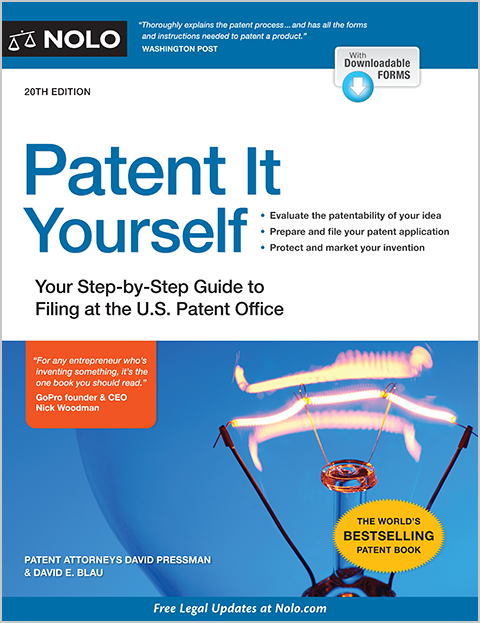There are two ways to qualify as a first user of a trademark:
- actual use—the first to use the trademark on a product that is distributed in the marketplace or, in the case of a service mark, the first to use the mark in connection with advertising or marketing of a service available to the public, or
- intent to use—the first to file an intent-to use application with the U.S. Patent and Trademark Office provided that (1) the applicant files the application before the trademark is actually used by another party and (2) the applicant later puts the mark into actual use and completes the registration process by filing an additional form and paying an additional fee.
When filing for a trademark registration, the primary difference between an actual-use and an intent-to-use application is that when answering the first question (What is Your Basis for Filing?), choose "Yes" under Intent to Use. You do not need to supply specimens with an intent-to-use application, but you'll have to include one with your Allegation of Use. In addition to the information in this chapter, the USPTO's help system should easily get you through this form.
If You Haven't Started Using Your Mark, Should You File an Intent-to-Use Application?
If you are not yet using your mark, you can wait until you put it into use before filing a trademark application, or you can file an application on the grounds that you intend to use it within six months of the date the mark is approved for registration by the USPTO. If you are unable to put the mark into use within that period, you can purchase additional six-month extensions, one at a time until three years have passed, if you are able to convince the USPTO that the reasons for the delays are legitimate.
The Advantages of the ITU
The advantage of filing an intent-to-use (ITU) application is that your filing date will serve as the date of your first use of the mark— assuming you go on to put the mark in actual use and take the other steps necessary to get the mark placed on the federal trademark register. This first-use date can be very important in the event a conflict develops with another mark—in the USPTO or in the marketplace.
Act Quickly
Once you decide to file on this basis, you should do so as quickly as possible, to obtain the earliest possible date of first use. As mentioned, the intent-to-use approach is more expensive than filing an actual use application—at least $100 more expensive, plus $150 for each additional six-month extension that is needed. Therefore, it is most appropriate to use the intent-to-use application when you have come up with a truly distinctive mark or you plan to spend big bucks "tooling up" to use the mark and you don't want to lay out the cash until you know that the mark will be yours. If your mark is legally weak—for instance, it uses common words in a common way or is descriptive of the products or services—you will have little choice but to wait until you have put the mark into use and can demonstrate that the public associates the mark with your product or service.
Learn more about trademark standards.
If you file on an intent-to-use basis, your mark will not be placed on the Principal Register until you file an additional document with the USPTO when you put it into actual use. This form is called "Statement of Use/Amendment to Allege Use for Intent-to-Use Application." It tells the USPTO the date you started using the mark and completes the registration process. You must also provide a specimen at that time, showing how you are using the mark. Keep in mind that the USPTO will only issue a Notice of Allowance – permitting registration of the mark -- for marks that are distinctive, either inherently or under the secondary meaning rule.
Abandoning an ITU Application
Also, if you filed an intent-to-use application, abandonment of the application may affect your ownership of the mark. For example, assume a business starts using the same or similar mark after you file your intent-to-use application but before you put your mark into actual use. If you follow through with your registration, then you can claim the original filing date as the date of first use and be considered the owner of the mark. If, on the other hand, you abandon the application, the other user will be considered the owner— because you will no longer be entitled to the filing date as your date of first use.
Filing The Allegation of Use for Intent-to-Use Application
As explained above, to actually get your mark registered, you will use a form called Allegation of Use for Intent-to-Use Application. This form may be filed at any time prior to the date the USPTO authorizes the publication of your proposed mark, and any time after the USPTO issues a Notice of Allowance. It may not be filed between those two dates, which has come to be known as the "blackout" period. The Allegation of Use can be prepared and filed online using TEAS.
Talk to a Lawyer
Need a lawyer? Start here.
How it Works
- Briefly tell us about your case
- Provide your contact information
- Choose attorneys to contact you
- Briefly tell us about your case
- Provide your contact information
- Choose attorneys to contact you



